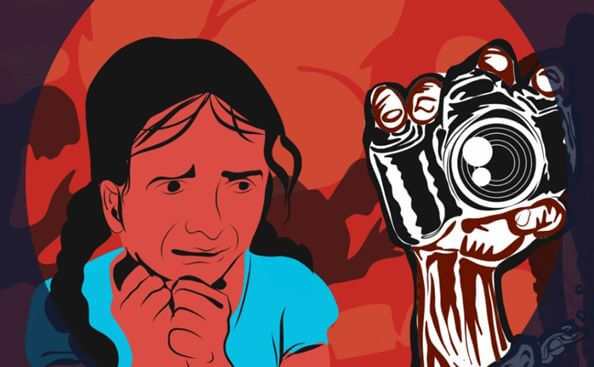From UPSC perspective, the following things are important :
Prelims level: POCSO Act
Mains level: Child pornography

Central Idea:
The article discusses a recent judgment by the Madras High Court quashing judicial proceedings against an individual accused of downloading child pornography. It highlights the court’s interpretation of relevant legal provisions and challenges the court’s decision in light of the existing legal framework.
Key Highlights:
- The Madras High Court’s decision in S. Harish vs Inspector of Police quashed proceedings against an accused who downloaded child pornography.
- The court’s interpretation suggests that merely downloading and watching child pornography in private may not constitute an offense.
- The article highlights the flaw in citing a precedent case from the Kerala High Court, which dealt with adult pornography, not child pornography.
- It discusses the necessity of differentiating between adult pornography and child sexual abuse materials (CSAM) in legal terminology.
- The article emphasizes the need for consistency between the Protection of Children from Sexual Offences (POCSO) Act and the Information Technology (IT) Act.
Key Challenges:
- Interpretation of legal provisions regarding the definition and offense of child pornography.
- Ensuring consistency between different legal frameworks, particularly the POCSO Act and the IT Act.
- Addressing the complexities of cybercrimes and the exploitation of children online.
- Balancing the protection of children with individual rights and privacy concerns.
- Clarifying the scope and application of legal precedents in cases involving child pornography.
Key Terms and Phrases:
- Child pornography
- Information Technology (IT) Act
- Protection of Children from Sexual Offences (POCSO) Act
- CyberTipline reports
- Child Sexual Abuse Materials (CSAM)
Key Quotes:
- “The High Court categorically said that watching child pornography per se was not an offence…”
- “The Madras High Court used its inherent powers under Section 482 of the Criminal Procedure Code (CrPC)…”
- “The National Crime Records Bureau… regularly gets geo-tagged CyberTipline reports…”
- “It is important to mention here that Section 67 read with Sections 67A and 67B of the IT Act are a complete code…”
Key Examples and References:
- Case of S. Harish vs Inspector of Police in the Madras High Court.
- Interpretation of legal provisions under Section 67B of the IT Act.
- Precedent case from the Kerala High Court regarding adult pornography.
- Use of CSAM terminology in addressing child exploitation online.
- Guidelines from the Supreme Court in State of Haryana vs Bhajan Lal (1992).
Key Facts and Data:
- Section 67B of the IT Act criminalizes various acts related to child pornography.
- The National Crime Records Bureau collaborates with the American National Center for Missing & Exploited Children.
- The article suggests an amendment to the POCSO Act to address inconsistencies with the IT Act.
- The Madras High Court’s decision was based on an interpretation of legal provisions.
Critical Analysis:
The article provides a critical analysis of the Madras High Court’s decision regarding child pornography and raises valid concerns about its interpretation of relevant legal provisions. It highlights the need for consistency in legal frameworks and suggests potential amendments to address existing inconsistencies. However, it also acknowledges the complexities of cybercrimes and the challenges in balancing child protection with individual rights.
Way Forward:
- Ensure clarity in legal terminology and definitions related to child pornography.
- Address inconsistencies between different legal frameworks, particularly the POCSO Act and the IT Act.
- Enhance collaboration between law enforcement agencies and organizations combating online child exploitation.
- Consider amendments to existing laws to adapt to evolving challenges in cyberspace.
- Encourage public awareness and education on the prevention of child exploitation online.
Get an IAS/IPS ranker as your 1: 1 personal mentor for UPSC 2024
